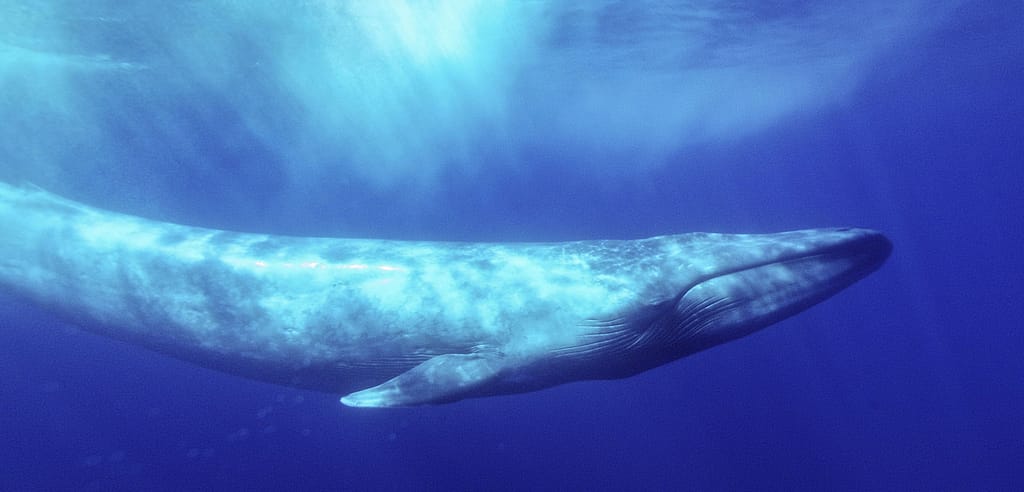
For the first time, scientists recorded blue whale songs in Indian waters, off Lakshadweep coasts. Experts believe the waters are rich, productive and could be breeding grounds for blue whales. Read to know all about it.
Blue whales (Balaenoptera musculus) are an endangered species. Pygmy blue whales are smaller than Antarctic blue whales. Moreover, they grow as big as 24 meters long and weigh about 100 tonnes. The Pygmy blue whales are found across the Indian Ocean, the Arabian Sea, and the northern Indian ocean.
Blue whale songs recorded in the Arabian Sea
The low moans of a blue whale from an underwater sound recorder was an unexpected catch amidst the cacophony of the ports for Divya Panicker, a marine mammal researcher. To her, it was definitely “one of the most thrilling parts” of her study. Panicker’s study was the first to document blue whale songs in the Indian waters. She is a doctoral candidate in oceanography at the University of Washington. “The song is made up of three notes and ranges between 30 and 100Hz. I sped up the songs several times to bring them within my hearing. It was quite wacky listening to low blue whale moans with a rooster crowing in the background,” describes Panicker. She theorizes that at least two blue whales were singing together.
Additionally, the analysis of all recordings between late 2018 and early 2020 shows that blue whales were present in the area just before the monsoons, between April and May. “Although we know blue whales occur and are singing in these waters, we do not know if they are traveling through or feeding in these waters. One of the next steps is to carry out dedicated visual surveys in April and May over the next few years to understand their behavior and some prey sampling during this period,” she added.
The sounds recorded are similar to the ones recorded by Abigail Alling in Sri Lanka in 1980. They make ‘the northern Indian Ocean blue whale song’. “Usually, blue whales (Balaenoptera musculus spp.), have very consistent song patterns but interestingly in some of our recordings, they were dropping the last unit. This has not been reported for this song type. And for future work it would be cool to understand why they may be doing this,” added the researchers.
What does this mean?
An interesting fact about the blue whale movement is that they track productive waters. The presence of blue whales shows that the water and underwater environment in the archipelago is productive and rich. “The reef, lagoon, island, and open ocean are intricately linked and any development and infrastructure plans for the islands need to be carried out within the ecological limits of this fragile ecosystem. It is important to understand their ecology and distributions to draw up a science-based species-specific conservation or management strategy,” said Panicker.
Moreover, cetaceans like dolphins and whales use sound to not just communicate but also to look for food and navigate. This is because sound travels four times faster in ocean waters than in air. Hence, in the absence of light, they evolved to navigate with sound. Additionally “They make high-frequency sounds for locating prey and the other kind of vocalization is a song; or a repetition of units. Only the males sing in both blues and humpbacks and are considered to be related to mate selection. Increasing the opportunity to find mates is a sign of the breeding season. So, if you have singing whales in an area at a certain time of the year. The area is likely a seasonal breeding ground,” explained Dipani Sutaria.
